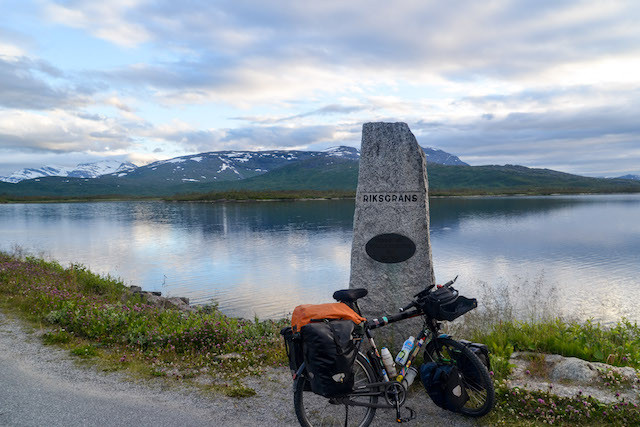The efficiency and smooth running of the border may therefore seem surprising. The explanation lies in a combination of cultural preconditions and legal arrangements between the two countries. The question then arises: could these Norwegian-Swedish border arrangements serve as a model for other parts of Europe, such as post-Brexit Ireland?
Norway and Sweden have large cultural similarities, including each being able to understand the other’s language. The countries were even united between 1814 and 1905. Even though this union was dissolved, the countries continued to cooperate and have shared laws. In the 1950s, they entered a passport union together with the other Nordic states Denmark, Finland and Iceland, which allowed ID-free travel between these countries.
Norway and Sweden thus have close ties, characterised by a high degree of trust. This is indicated by the fact that several of the border crossings in the sparsely populated areas along the 1,630km long border are unattended.
This tradition of cooperation forms the base for the work of the Nordic Council of Ministers, where Sweden, Norway, Denmark, Iceland and Finland work together on a wide range of policies. Within this framework, the countries have agreed on how to simplify matters for people moving across their borders. All Nordic citizens can freely live, study or work in any of the countries – you just have to register upon arrival. You will then get a civil registration number, which gives you access to the many social services available in the these highly regulated welfare states.
The accession to the EU by some of the countries, including Sweden, has somewhat limited the scope for formal Nordic agreements. Still, this form of cooperation is an arena for identifying and solving problems. Importantly, the Nordic cooperation includes not only the level of governments and ministers, but also working groups and expert panels on lower levels. This means that Norwegian and Swedish civil servants may establish contacts and simple ways of communication to solve problems, and thus establish a certain level of mutual confidence.
The EU connection
Even though cooperation within the Nordic framework is important, the decisive factor for the success of Norwegian-Swedish cross-border movement is undoubtedly the European Economic Area (EEA) treaty. This agreement between the EU and Norway (as well as Iceland and Liechtenstein) means that Norway is connected to the EU common market.
Norway can trade most goods with its EU neighbours, without customs duties being levied. There are, however, some exceptions, such as agricultural products and food.
Norway has also adopted EU legislation on coordination of social security, so that that people who move or commute between it and the EU qualify for benefits in case of unemployment or illness. In spite of not being an EU country, Norway has even joined the Schengen Agreement on abolishing border controls. In this way, the free movement between Norway and Sweden that has existed since the 1950s has been retained and reinforced by European cooperation.
Of course, there are occasional problems for cross-border mobility between the countries. For example, people who move between Norway and Sweden may not always know which country to turn to when it comes to taxation or social security.
People and businesses that move across the border may also occasionally experience disadvantages. Examples include delayed decisions on unemployment benefits for former cross-border commuters. However, the Nordic cooperation on various levels provides a forum for discussing and solving problems relating to administrative practices or national legislation.
To help citizens and companies, Norwegian and Swedish authorities have set up a cross-border service, which provides information and advice on what to consider when working or doing business in the other country. In this way, many problems may be solved by informal and pragmatic low-level cooperation between Swedish and Norwegian authorities.
The success of Norwegian-Swedish cross-border mobility may thus be explained by a combination of cultural features, including a high degree of mutual trust – and legal arrangements. The importance of the EEA treaty cannot be overlooked. Without an overarching arrangement of this kind, cross-border movement would probably be much more difficult. As a complement, the Nordic cooperation plays an important role, as it provides mechanisms for discussing and solving problems in a pragmatic way.
![]() Given the historical differences, the relation between Norway and Sweden cannot, of course, be directly transferred to Ireland or other parts of Europe. It does indicate, however, that extensive legal cooperation, problem solving mechanisms on different levels and mutual trust are key features of successful cross-border mobility. This could be applied in other parts of Europe on the EU border.
Given the historical differences, the relation between Norway and Sweden cannot, of course, be directly transferred to Ireland or other parts of Europe. It does indicate, however, that extensive legal cooperation, problem solving mechanisms on different levels and mutual trust are key features of successful cross-border mobility. This could be applied in other parts of Europe on the EU border.
